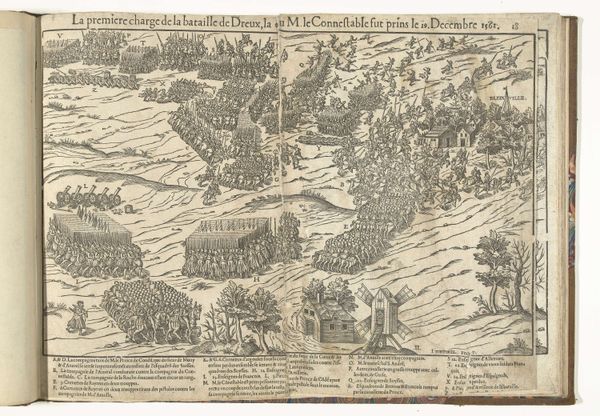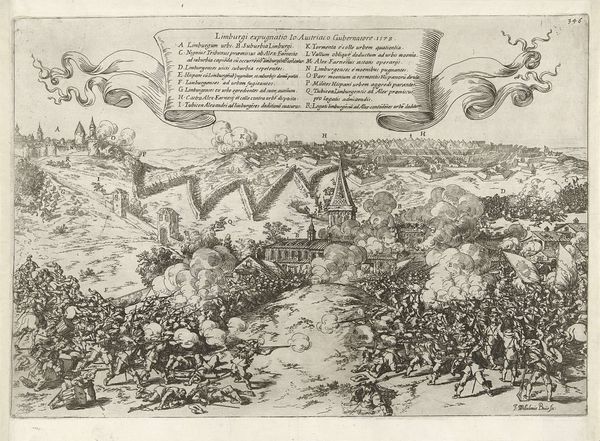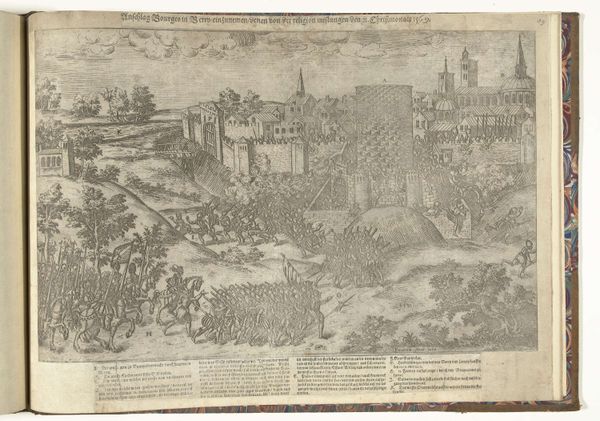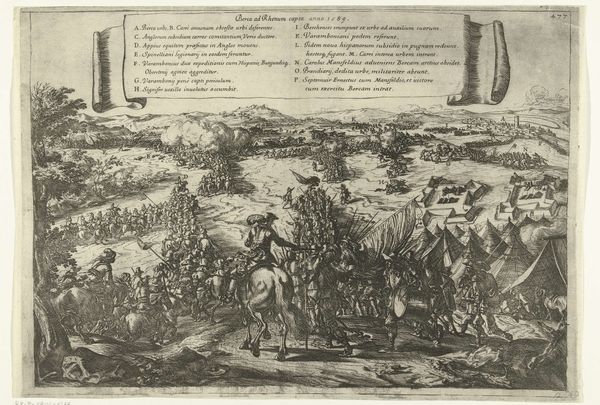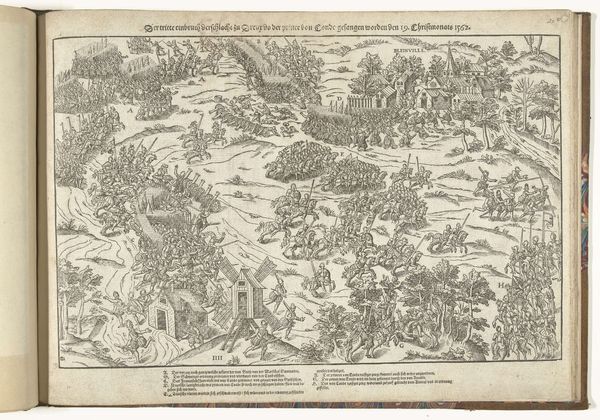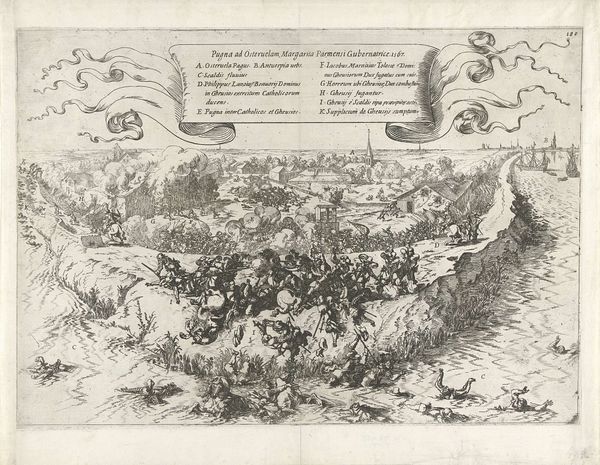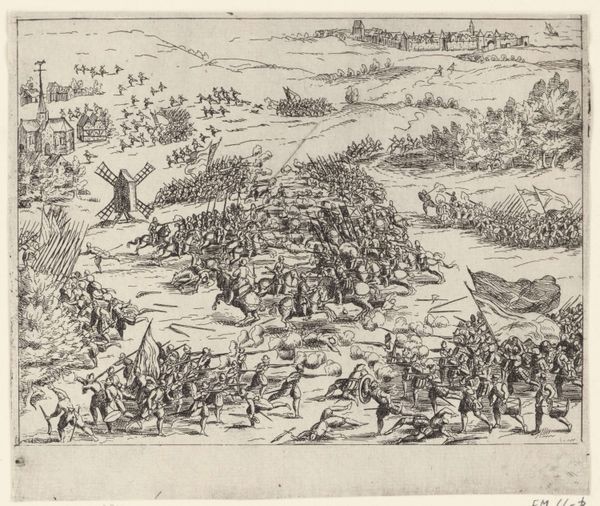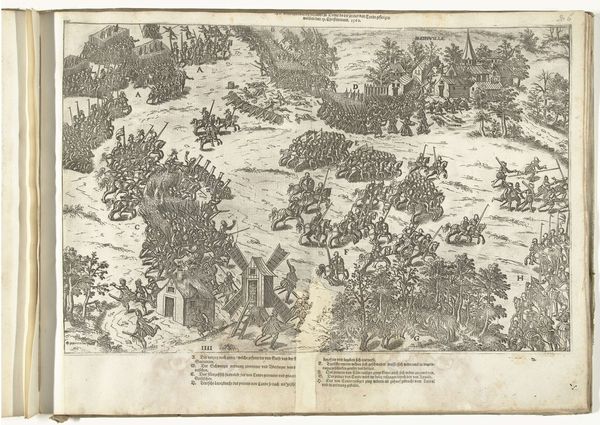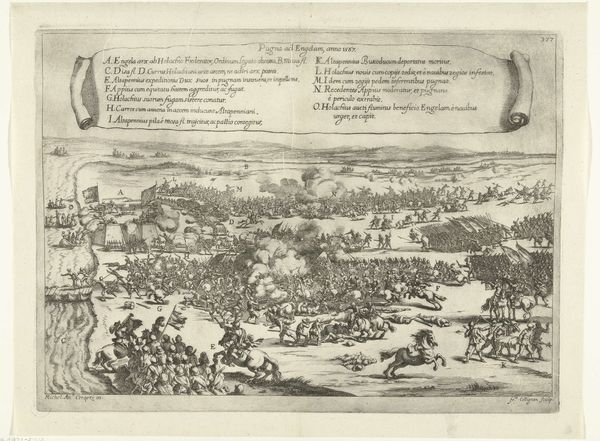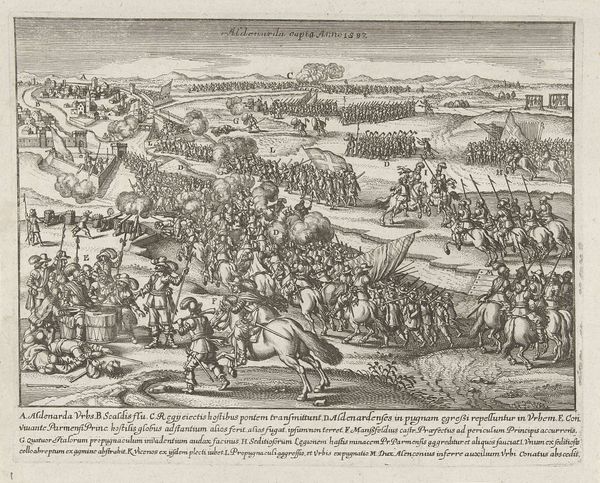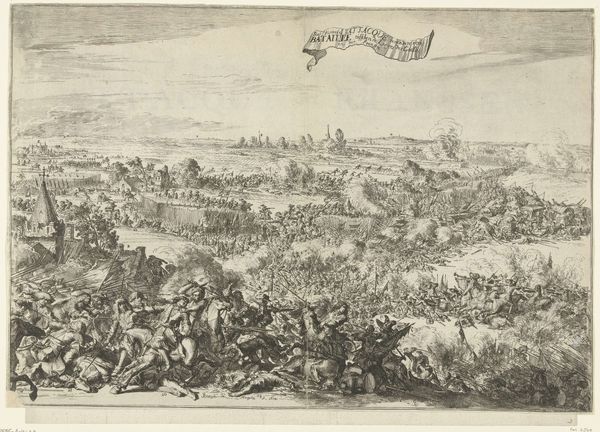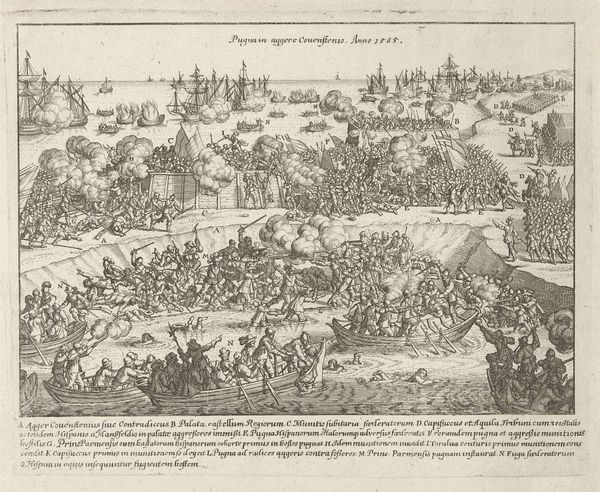
print, engraving
#
narrative-art
# print
#
figuration
#
11_renaissance
#
line
#
history-painting
#
northern-renaissance
#
engraving
Dimensions: height 376 mm, width 505 mm
Copyright: Rijks Museum: Open Domain
Curator: What a chaotic yet fascinating image. This engraving, titled "Slag bij Cognac in de Auvergne, 1568," was created around 1570 by Jean Perrissin. Editor: Chaos is right! My eyes are darting all over the place. It’s a swirling mess of horses, people, weapons… like a medieval mosh pit gone terribly wrong. And all in stark black and white, which intensifies the drama. Curator: Exactly. Perrissin's print style reflects a distinctly Northern Renaissance aesthetic. Think of Dürer's intricate engravings; that meticulous approach is quite present here. He used line to build form and convey the density of this battle scene. What we’re witnessing is essentially propaganda, narrating and framing events from the French Wars of Religion. Editor: Propaganda, huh? It certainly *feels* biased. I wonder whose side Perrissin was on. There’s something romantic about it, despite the brutality. All those tiny, carefully rendered details almost make the carnage… beautiful? Morbid, I know. Curator: Indeed. Historical context is vital here. Consider how prints like this functioned in early modern Europe. They circulated widely, shaping public opinion and consolidating power. Note the detail given to depicting weaponry and military formations – crucial visual data for contemporaries analyzing power struggles. The conflict itself, a key moment during the French Wars of Religion, shaped much of France's political future. Editor: Still, it's hard to get past the emotional weight. Imagine the noise, the terror… even reduced to a print, it's overwhelming. Art can do that; capture a truth that goes beyond documented fact. The energy is palpable, wouldn't you agree? Even if the specifics are... politically massaged. Curator: Precisely. That tension between art's expressive power and its instrumental use remains potent. It's what keeps these images so relevant to us, centuries later. Editor: So true. Well, that's one lively little print. Makes you think twice about those "glory days," doesn't it? Curator: It certainly challenges simplistic notions of the past. Something to ponder as we move along.
Comments
No comments
Be the first to comment and join the conversation on the ultimate creative platform.
